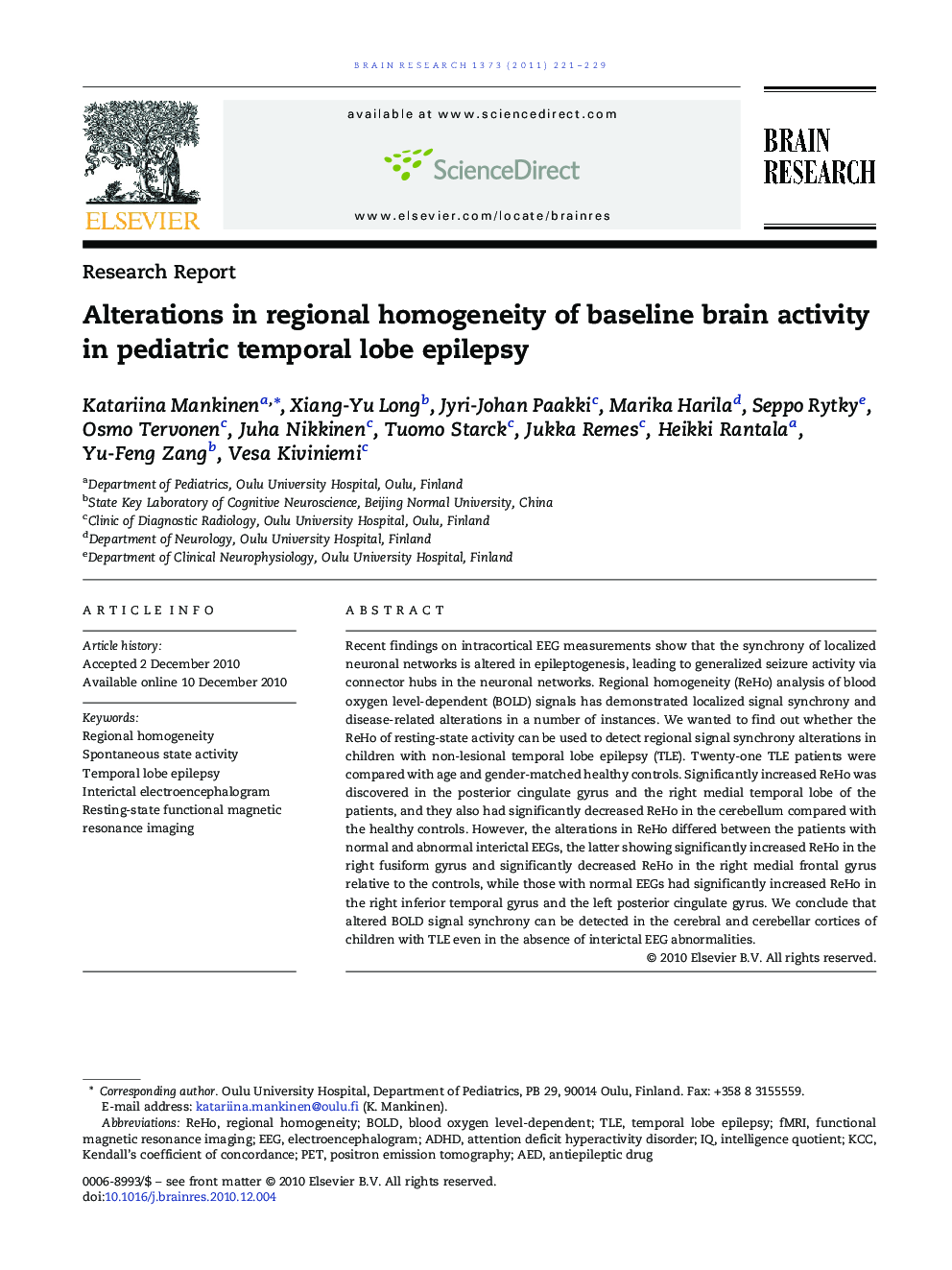| Article ID | Journal | Published Year | Pages | File Type |
|---|---|---|---|---|
| 6265236 | Brain Research | 2011 | 9 Pages |
Recent findings on intracortical EEG measurements show that the synchrony of localized neuronal networks is altered in epileptogenesis, leading to generalized seizure activity via connector hubs in the neuronal networks. Regional homogeneity (ReHo) analysis of blood oxygen level-dependent (BOLD) signals has demonstrated localized signal synchrony and disease-related alterations in a number of instances. We wanted to find out whether the ReHo of resting-state activity can be used to detect regional signal synchrony alterations in children with non-lesional temporal lobe epilepsy (TLE). Twenty-one TLE patients were compared with age and gender-matched healthy controls. Significantly increased ReHo was discovered in the posterior cingulate gyrus and the right medial temporal lobe of the patients, and they also had significantly decreased ReHo in the cerebellum compared with the healthy controls. However, the alterations in ReHo differed between the patients with normal and abnormal interictal EEGs, the latter showing significantly increased ReHo in the right fusiform gyrus and significantly decreased ReHo in the right medial frontal gyrus relative to the controls, while those with normal EEGs had significantly increased ReHo in the right inferior temporal gyrus and the left posterior cingulate gyrus. We conclude that altered BOLD signal synchrony can be detected in the cerebral and cerebellar cortices of children with TLE even in the absence of interictal EEG abnormalities.
Research Highlights⺠ReHo analysis detects different synchronicity in TLE patients and in controls. ⺠Synchronicity alterations differ in patients with normal and abnormal interictal EEGs. ⺠Spread of altered synchronization may precede epileptiform activity. ⺠ReHo analysis could be a new tool for the detection of interictal EEG activity.
